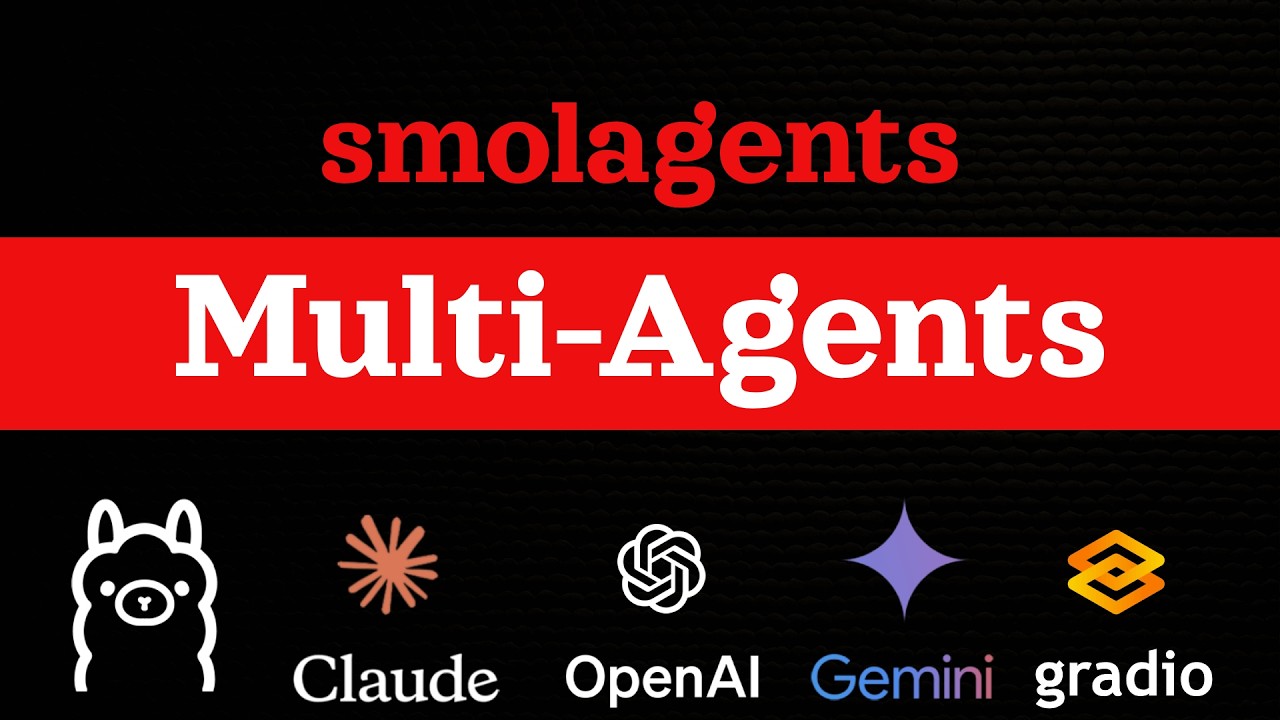The first video on Hugging Face’s SmolAgents introduces viewers to the framework and its capabilities for building agent-based applications, focusing on the setup and basic functionalities. It covers various agent types and models, emphasizing the importance of selecting the right model for specific tasks to optimize performance.
In the second video on Hugging Face’s SmolAgents, the focus is on building multi-agent applications. The presenter assumes viewers have already watched the first video and begins with quick tests and explanations of various agent types. The video covers how to utilize SmolAgents with models like Llama, Claude, Gemini, Gradio, and OpenAI. Viewers are encouraged to check timestamps for specific sections, particularly those related to multi-agent setups.
The video starts by demonstrating the basic setup for a standard code agent, which involves importing the necessary SmolAgents code and setting up a Hugging Face API token. The presenter explains the different models available, noting that while some can be used for free, others require a paid tier. The demonstration includes running a simple agent that quickly returns answers using the web version of the model. The video also explores tool-using agents, particularly those that handle JSON responses, and highlights the challenges faced when using smaller models for more complex tasks.
Next, the presenter showcases how to run agents with proprietary models like Claude and Gemini. The results indicate that these models perform better than smaller ones, especially when handling code agents and tool calls. The video emphasizes that while smaller models can manage simple tasks, they often struggle with more complex queries, leading to inefficient token usage and less reliable outputs. The presenter suggests that improvements may come as models are fine-tuned for specific tasks.
The video then introduces the Gradio UI, demonstrating how to create a simple interface for interacting with agents. The presenter shows how to implement a text-to-image tool using Gradio, allowing users to input queries and receive generated images. This section highlights the ease of integrating various tools into a Gradio app, showcasing the capabilities of SmolAgents when paired with robust models.
Finally, the video delves into creating multi-agent systems, illustrating how to define and manage multiple agents for complex tasks. The presenter provides examples of agents designed for research, writing, and editing blog posts, demonstrating how they can work together to produce coherent outputs. The video concludes by encouraging viewers to experiment with their own custom tools and agents, emphasizing the potential for creating tailored solutions using the SmolAgents framework. The presenter invites feedback and interaction from viewers, fostering a community of experimentation and learning.
